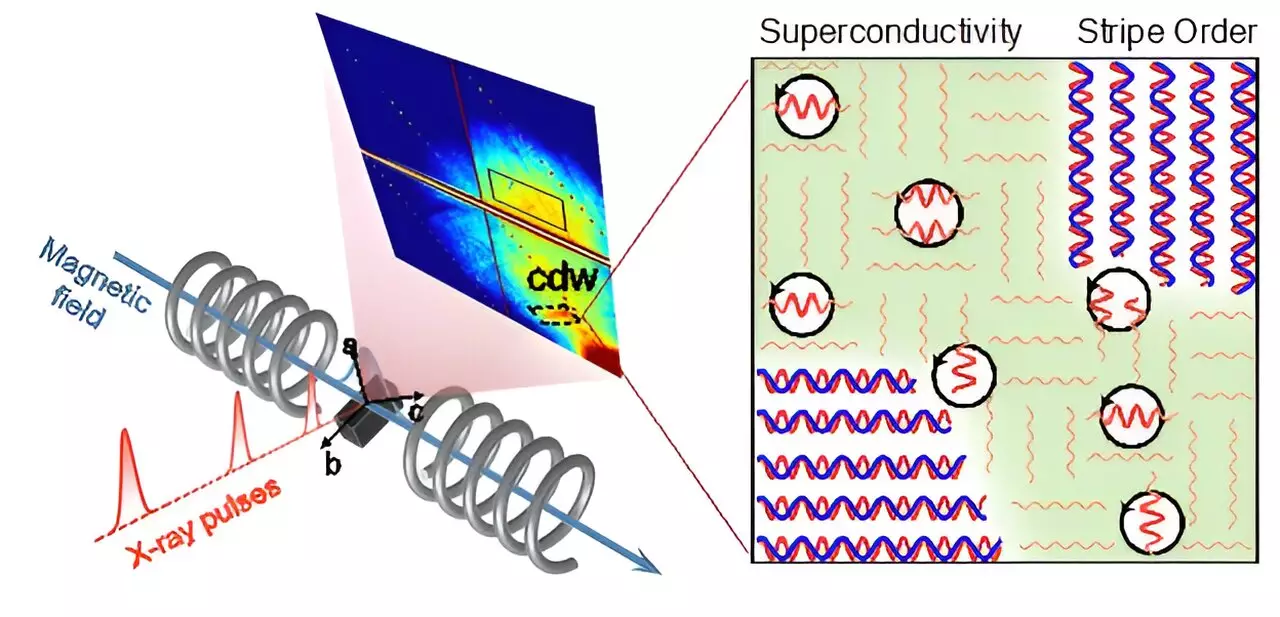Superconductors have fascinated scientists for decades, particularly cuprates, where the interplay of magnetic spin and electric charge density wave phenomena creates a unique and complex environment. Typically, in standard metals, the electron spins balance out, resulting in a uniform charge distribution. However, the cuprates challenge this norm due to their strong electron-electron interactions. Characterizing and understanding this complexity is vital for unlocking their potential for high-temperature superconductivity and advancing technology.
New Insights into Stripe States
Recent research showcased in *Nature Communications* opens new avenues by revealing a novel interaction of spin density waves (SDW) and charge density waves (CDW) which form a stable “stripe state.” In this scenario, the peaks and valleys of these two waves align harmoniously, creating an intriguing stability that could allow for further investigation into superconducting properties. This aligns with an ongoing debate in the scientific community: is superconductivity a harmonious neighbor or a rival to these ordering phenomena?
The findings indicate that short-range CDW interactions can coexist with short-range superconductivity in a manner that significantly undermines previous beliefs about their antagonistic relationship. This insight is nothing short of revolutionary, suggesting that rather than being mere competitors, these properties can enhance one another.
Exploring the Role of Charge Order
In the ongoing quest to harness superconductivity at higher temperatures, the new insights lead to a pivotal consideration: short-range charge order may pave the way for improved vortex formation and motion within superconducting materials. Researchers are realizing that manipulating these charge order states could open up pathways to stabilizing superconductivity under varying conditions, thereby pushing the boundaries of our former understanding.
Also intriguing is the revelation that static vortex states—those frustratingly stable formations that hinder superconductivity—could transition to a more fluid vortex liquid state under high magnetic fields of 12 to 24 Tesla. This transformation drastically changes how we approach superconductivity, as vortices that move rather than stay static could one day hold the key to achieving a long-desired superconducting phase at higher operational capacities.
Implications for Future Research
What stands out in this research is the statistical enhancement of the CDW intensity at lower critical fields—far removed from the upper limits that would typically extinguish superconductivity. This seemingly paradoxical phenomenon fuels excitement, as it nurtures the foundation for a more comprehensive understanding of the underlying physics governing density waves and superconductivity in cuprates.
The implications are profound. Beyond just academic satisfaction, such discoveries could accelerate advancements in quantum electronics, magnetic levitation, and lossless energy transmission. The tantalizing prospect of marrying superconductivity with alternative electronic states creates a perfect storm of innovation, one that could reshape technologies and industries if successfully navigated.
The newly uncovered relationships among superconductivity, charge density waves, and magnetic interactions collectively represent a frontier in condensed matter physics, urging researchers to revise their previous paradigms and rethink how various electronic states can coexist, enhance, and interact within complex materials like cuprates.


Leave a Reply